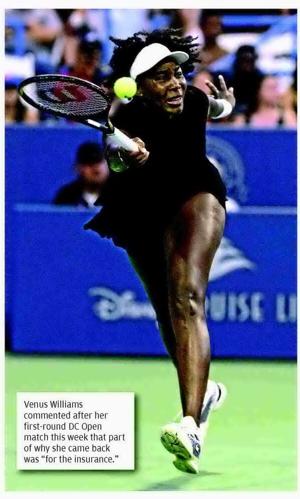Venus Williams’ recent triumph at the D.C. Open highlighted not only her remarkable endurance but also sparked a critical conversation about the intricacies of athlete health insurance for those navigating the later stages of their careers or returning from hiatus. Her seemingly lighthearted remark during an on-court interview subtly underscored a significant challenge many professional athletes face regarding their medical coverage once their active playing days conclude or are interrupted. This article delves into the diverse and often complex health policies across various professional sports leagues, revealing a fragmented landscape of player welfare provisions.
While active athletes typically receive comprehensive medical benefits during their competitive seasons, Williams’ return after a 16-month break shed light on the often-overlooked duration and scope of this insurance, particularly when players are not actively competing. This crucial distinction underscores a vital gap in current sports insurance frameworks, where the transition from active participant to retired professional can abruptly sever access to essential medical support, prompting a wider reevaluation of existing agreements and policies.
In individual sports like golf, where collective bargaining agreements are absent, health coverage varies, though the PGA Tour offers a group insurance plan for active members across its main, Champions, and Korn Ferry tours. This plan provides a degree of financial security, with partial subsidization available for players who consistently meet specific performance criteria, including tournament participation and victories, illustrating a system tied directly to ongoing competitive engagement and success.
The National Football League, in contrast, offers less extensive long-term health benefits for its retirees compared to many other major leagues. Under their existing policy, athletes who have played for a minimum of three years are eligible to remain on the NFL health insurance plan, but this coverage is strictly limited to a five-year period following their retirement, creating a significant potential gap in care for those with longer post-career lives. This finite window underscores a pressing issue within professional sports policy regarding retired player care.
WNBA players are currently engaged in heated negotiations for their new Collective Bargaining Agreement, with a strong focus on securing more robust retirement health care. These discussions have proven challenging, with recent meetings failing to yield an agreement. A unique and progressive aspect of the WNBA’s current healthcare provisions, however, includes a reimbursement program for athletes with over eight years of service, offering up to $20,000 annually for adoption, surrogacy, egg freezing, or other fertility treatments, highlighting a forward-thinking approach to women’s player health coverage.
Similarly, the National Hockey League provides an option for its former players: those who have competed in more than 160 games—approximately two full seasons—are eligible to purchase NHL-sponsored health insurance upon retirement. This retirement plan can also be partially subsidized by the league, providing an important, albeit optional, safety net for athletes transitioning away from the demanding physical rigors of professional hockey, offering a measure of post-retirement athlete care.
Minor League Baseball operates under its own distinct Collective Bargaining Agreement, which guarantees health insurance for active players throughout their time in the league. However, the system presents a stark reality: players who are cut from their teams or choose to leave the league lose their health coverage almost immediately, typically at the end of the month in which their employment concludes. This immediate cessation of benefits poses significant challenges for athletes navigating the highly competitive and often unstable landscape of minor league sports, raising broader questions about comprehensive sports industry health provisions.
The varied and often disparate health insurance policies across professional sports leagues underscore a critical discussion about athlete well-being beyond their playing careers. From top-tier tennis stars to aspiring minor league players, the security of long-term health coverage remains a complex issue, demanding ongoing dialogue and policy adjustments to ensure robust player welfare for all who dedicate their lives to professional athletics.






Leave a Reply